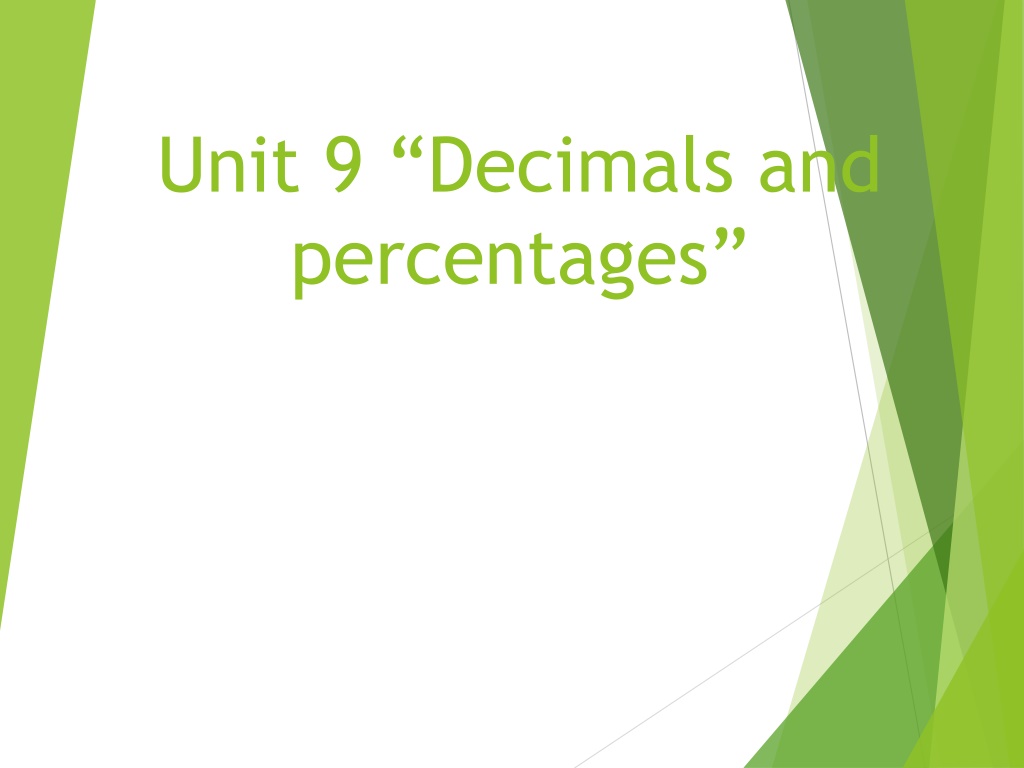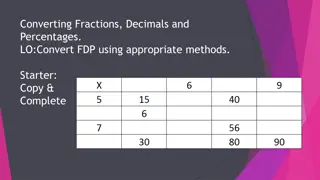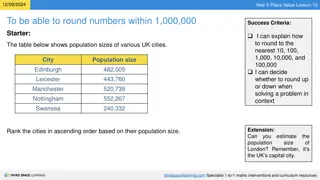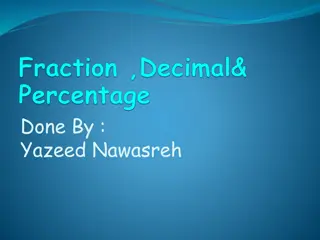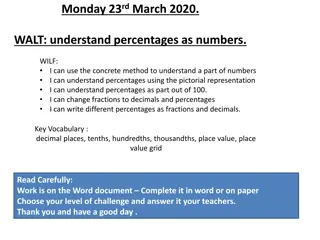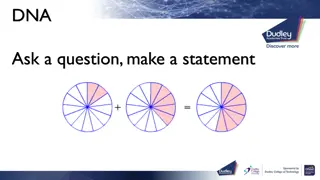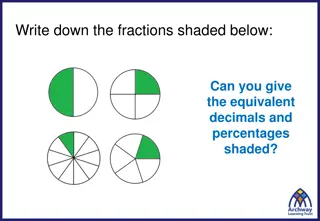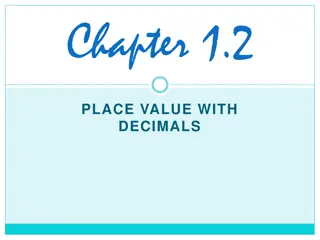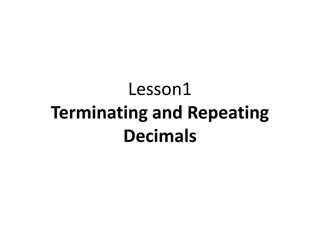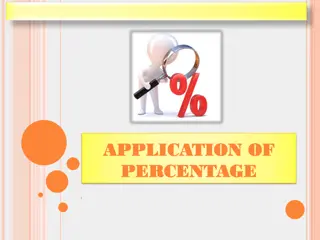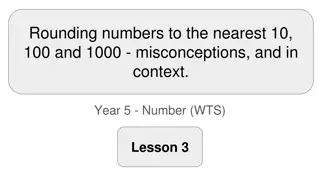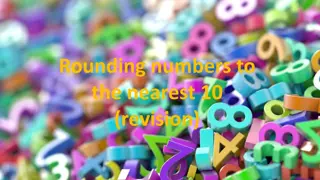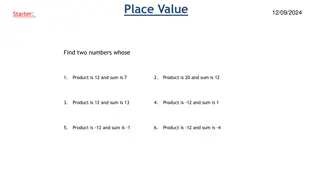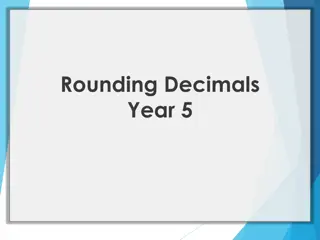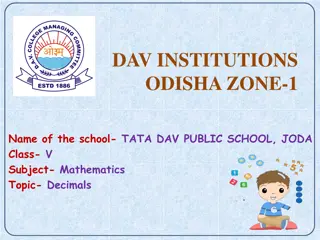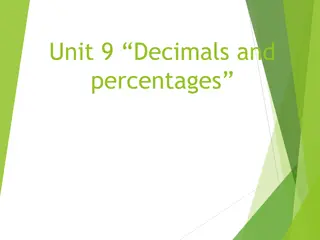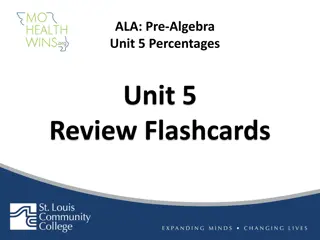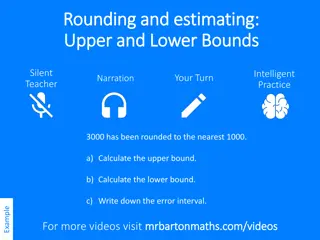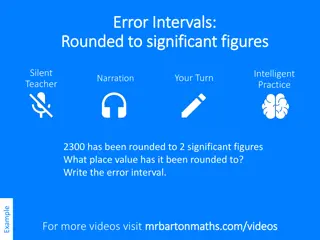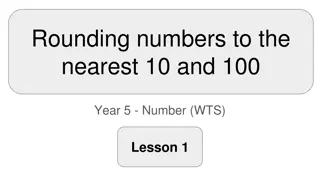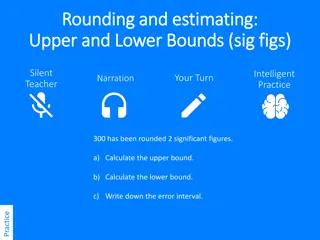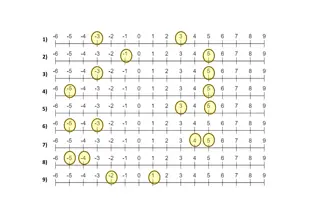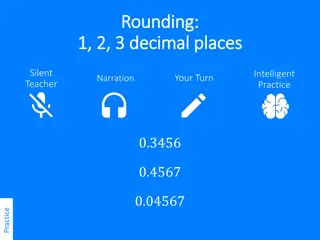Understanding Decimals, Rounding, and Percentages
Decimal numbers represent values based on powers of 10, with each digit's position holding a specific place value. Rounding simplifies numbers while keeping them close in value. Additionally, percentages represent fractions of 100 and can easily be converted from fractions by writing them with a denominator of 100.
Download Presentation

Please find below an Image/Link to download the presentation.
The content on the website is provided AS IS for your information and personal use only. It may not be sold, licensed, or shared on other websites without obtaining consent from the author. Download presentation by click this link. If you encounter any issues during the download, it is possible that the publisher has removed the file from their server.
E N D
Presentation Transcript
Unit 9 Decimals and percentages
A Decimal Number (based on the number 10) contains a Decimal Point.
Place value. When we write numbers, the position (or "place") of each digit is important. For example: In the number 327: the "7" is in the Ones position, meaning 7 ones (which is 7), the "2" is in the Tens position meaning 2 tens (which is 20), and the "3" is in the Hundreds position, meaning 300.
Multiplying and dividing decimals by powers of 10.
P. 131, Ex 9A Q1 + 2 + 3
Rounding Rounding means making a number simpler but keeping its value close to what it was. The result is less accurate but easier to use.
How to round numbers? Decide which is the last digit to keep. Leave it the same if the next digit is less than 5 (this is called rounding down). But increase it by 1 if the next digit is 5 or more (this is called rounding up). P. 133, Ex 9B Q2 + 3 +4 + 9 + 10
Understanding percentages a percentage is a number or ratio that represents a fraction of 100. It is often denoted by the symbol "%" or simply as "percent" or "pct." For Example: 35% is equivalent to the decimal 0.35, or the fraction 35 100 To review watch the video below: https://www.youtube.com/watch?v=JeVSmq1Nrpw https://www.youtube.com/watch?v=JeVSmq1Nrpw P. 134, Ex. 9C Q1 + 3 + 4 + 5
Changing fractions to percentages. It is easy to write a fraction with a denominator of 100 as a percentage. For Example: 67 100 = 67% You can change any fraction to a percentage by writing it with a denominator of 100. P. 135, Ex. 9D Q1 + 2 + 3 + 4 + 5 + 6 + 7
Expressing decimals as percentages. To write decimals as percentages you can first write your decimal as a fraction with denominator 100. For Example: 0.5 as a percentage 5 10= 50 100= 50% A quicker way to change a decimal to a percentage is to multiply by 100. For Example: 0.471 as a percentage: 0.471 x 100 (move the decimal point to the right 2 decimals places) So, 0.471 x 100 = 47.1%
To review watch the video below: https://www.youtube.com/watch?v=-Xt4UDk7Kzw P. 135, Ex. 9D Q1 + 3 + 4 + 5 + 7 + 8
Finding percentages of amounts. Percentages are often used in everyday transactions. For example: Tax 15 % Discount 10% In each case you have to find the percentage of an amount to find the discount or the tax. Example: Find 25% of 100 JD. 25 100 x 100 = 25 JD.
To review watch the video below: https://www.youtube.com/watch?v=rR95Cbcjzus P. 140, Ex. 9F Q1 + 2 + 3 + 5 + 6 + 7 + 8 + 10 + 11 + 13
